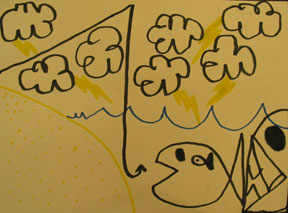
In my effort to ripoff myself, I thought I’d start by outlining what i mean by innovation and other related terms.
My working definition of innovation refers to a capitalization on new business opportunities through new products, services, processes or experiences (collectively referred to simply as product hereafter). New ideas that cannot be tied to business opportunities may be wonderfully creative, but ultimately inert in terms of capitalization, and so fail my working definition.
Opportunities are situations that afford both a chance to create value for someone or something at a profit in some new or unique way, and a chance to achieve and maintain a position of competitive advantage.
Now here is where things get a little controversial. I believe that people and organizations are more strongly averse to pain than they are attracted to pleasure. This negative motivation means that one will most consistently provide higher value by helping to alleviate pain. This is of course a philosophical position I cannot (yet) prove with empirical evidence.
I’m defining pain to refer to a problem that 1) costs a subject time, money and/or attention, 2) the subject experiencing the problem accurately recognizes it, and 3) the problem is sufficiently acute to warrant spending time, money, and/or attention to alleviate it.
Pain then boils down to cost, in terms of time, money and attention (and in the case of consumers, perhaps personal ego as well). If the cost to alleviate the pain is less than the cost of living with it, we have ourselves a business opportunity ripe for a great new innovation to capitalize on. Please forgive the Fischer-Price economics—I’m just trying to lay some very basic definitions.
Costs drive Pain > Pain drives Opportunity > Opportunity drives Innovation
Under this interpretation, necessity really is the mother of invention.
With consumers it appears most (if not all) pains are costs related to at least one of Maslow’s hierarchy of needs (or another needs hierarchy like Clayton Alderfer’s ERG). Henry spends a lot of money on diet books because he feels that his weight is costing him more in terms of belongingness than the books cost financially. Buying these books is his way to solve the pain of not belonging to his perception of a certain group.
These definitions raise further questions, such as:
- Other than pain what else can give rise to business opportunities?
- Should focusing on pain differ between consumers and businesses (what pain does the iPod solve? and is that why people are snapping them up?)
- Are there pains other than time/money/attention/ego costs that give rise to business opportunities?
- Does something like Maslow seem appropriate for classifying pains?
- Could it provide some insight into pains in order to drive innovative solutions, or is it just too academic?
- Is there a similar needs hierarchy for business customers, or does Maslow apply to businesses too?









